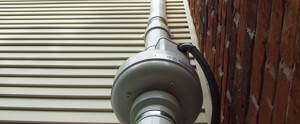EPA Joins Global Call-to-Action on Radon Cancer Dangers
Release date: 09/21/2009
Contact Information: Dave Ryan Ryan.dave@epa.gov 202-564-7827 202-564-4355
WASHINGTON -- The U.S. Environmental Protection Agency is joining the World Health Organization's first global call-to-action on cancer risk from radon in homes. EPA is the U.S. representative in this initiative. Radon inhalation accounts for up to 14 percent of lung cancers worldwide, and is the world's second-leading risk of lung cancer, next to smoking.
The WHO initiative is reflected in its guidance publication, "Handbook on Indoor Radon," which represents the collaboration of 30 countries to understand and overcome the risks posed by radon. The handbook demonstrates a consensus that radon is a global public health risk.
The WHO guidance is intended to help countries establish or expand radon programs. It offers public health guidance, while providing detailed recommendations and policy options on reducing radon health risks. The handbook is also aimed at the construction and building industries, which can use foundation and ventilation features to prevent radon entry into homes.
Radon is a colorless, odorless radioactive gas that can be present in dangerous levels in the home. Radon is released from rock or soil, seeps into homes through foundation cracks, and can reach harmful levels if trapped indoors. EPA has been active on indoor radon issues for more than 20 years, and recommends that all homes in the U.S. be tested for radon and high levels be reduced.
For more information on the WHO Radon Project:
http://www.who.int/ionizing_radiation/env/radon/en/
For more information on radon: http://www.epa.gov/radon




